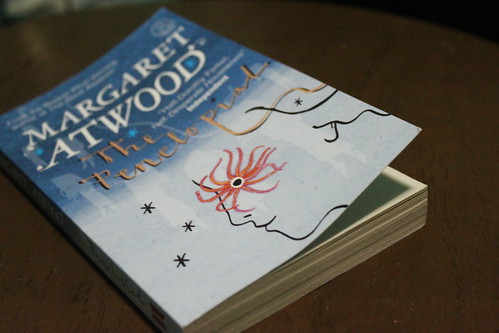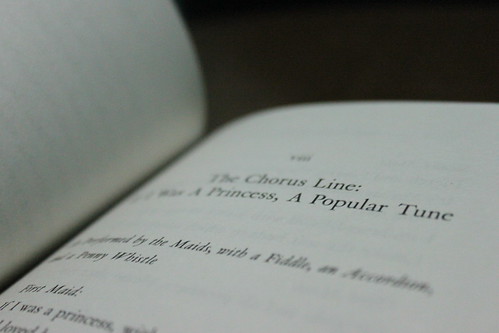


It is not a secret that I have a penchant for hoarding books. In a resolve to finally go through the shelf of unread books that I have had since last mid-year, I started picking them up one by one. After Sammy's House (which is not as hilarious as Sammy's Hill, but is bearable at least), I started leafing through Margaret Atwood's The Penelopiad. Whether it was my body subconsciously telling me to relax or my brain asking for something other than worry and security studies, I don't know. I do know that an hour after supposedly "skimming" through the good parts, I realized I was done. Done! The full monty. All 200 pages of glorious, seductive, thrilling mythology.
A re-telling of the story of Odysseus through the eyes of Penelope, his wife and the twelve maids he chose to hang after his ten-year sojourn following the battle of Troy, the Penelopiad is everything a mythology should be. A myth is not a myth unless it is universal and timeless. It is not legendary until it shows traces of deceit, desire, longing, and fear. Most importantly, fear. Fear of being human, of a time so numbered from the very beginning that ambitions to transcend its limitations ruin people after people. It all starts and ends with fear, just like all the powerful myths and fictions we know. The Penelopiad is a narrative of Penelope, a reflection of the life she's had on earth, thousands of years later. It is the ruminations of a fallen woman, one that has had to put up with self-righteous Gods, demi-Gods and people of the Myth. It is half a memoir, half answers to the inquisitor, tied together by a simple prose and the occassional chorus from the maidens (which if you have the vocal prowess of a flamingo, like I do, you will read as poems).
What I like best about the novel is its brevity. It is simple but is brimming with ideas and side snippets about mythology that I did not feel shortchanged at all. There are many ideas about Greek Mythology that Margaret Atwood has introduced or re-enforced in the novel. For one, the concept of the afterlife and the river that divides the living, the dead and the undead. The description about it is vague in itself, (not as vile as the despicable place of the god Hades but not as beautiful as the meadows of life either) but Penelope's ruminations about the ways of the dead make it very exciting. Much more exciting than Odysseus and Telemachus' hanging of the twelve beautiful maids. Much more intriguing than the beautiful Helen of Troy who appears in this novel as Penelope's deceitful, conceited cousin. Hooray for Helen not being the center of attention, for once. You'll have to read the book to see what I mean. It is wonderful, really, and a refreshing change from the trash film makers call Mythology nowadays. (Although its leads are particularly dreamy, yes. Yes!)
I'd like to end this short review (if you can call it that, but please--just read the book!) with an excerpt. It has nothing to do with the story's core. It is just a thought from a woman observing the change within thousands of years after her lifetime. It struck a cord because, well, as humans we have the strangest nature of gravitating towards the trash. Or, particularly, wanting trash :
The man who won the contest got the woman and the wedding and was then expected to stay at the bride's father's palace and contribute his share of male offspring. He obtained wealth through the marriage--gold cups, silver bowls, horses, robes, weapons, all the trash they used to value so much back when I was alive. His family was expected to hand over a lot of this trash as well.I can say trash because I know where most of it ended up. It mouldered away in the ground or it sank to the bottom of the sea, or it got broken or melted down. Some of it made its way to enormous places that have -- strangely -- no kings or queens in them. Endless processions of people in graceless clothing file through these palaces, staring at the gold cups and the silver bowls, which are not even used any more. Then they go to a sort of market inside the palace and buy pictures of these things, or miniature versions of them that are not real silver or gold. That is why I say trash.
Promise me you'll read the book? Google it and think about it? :)
